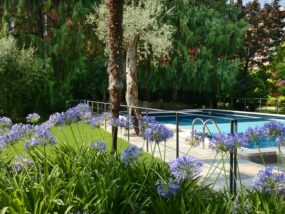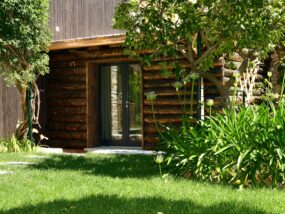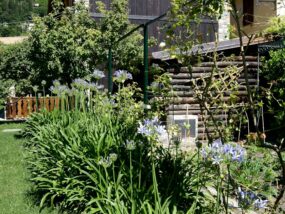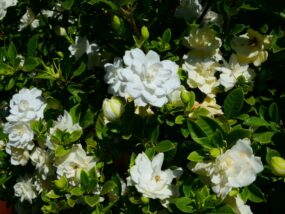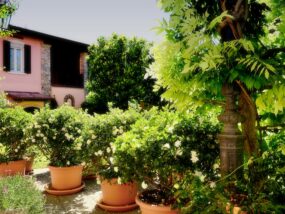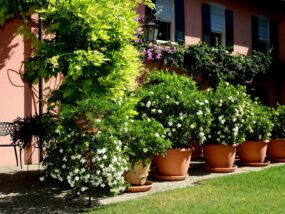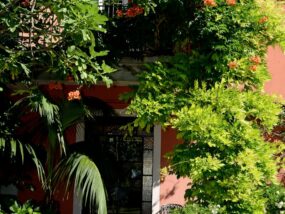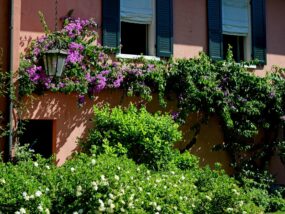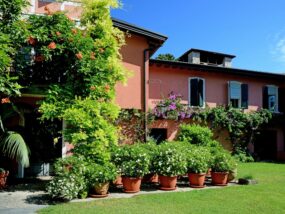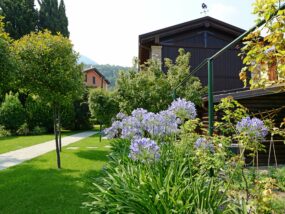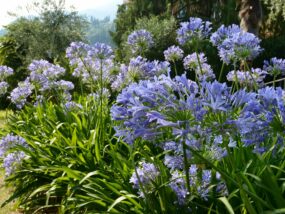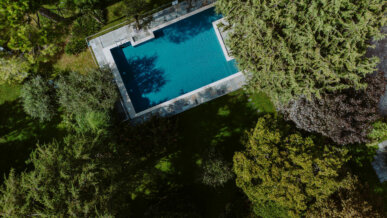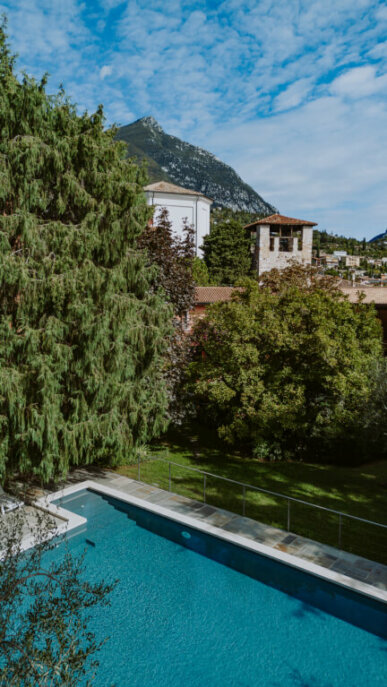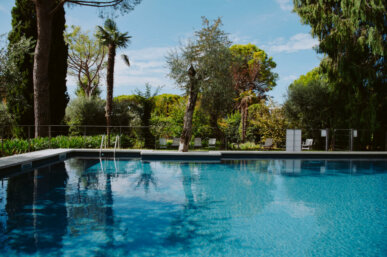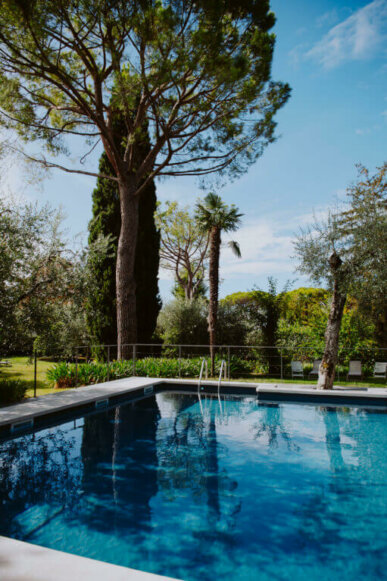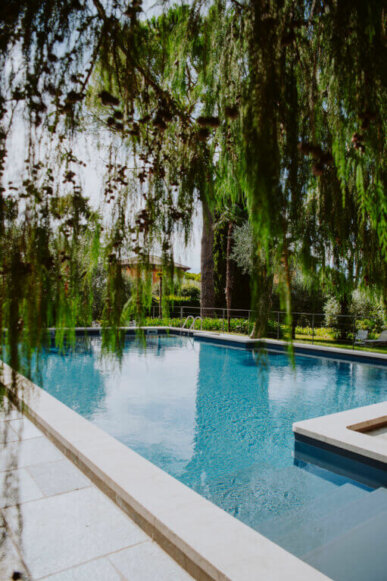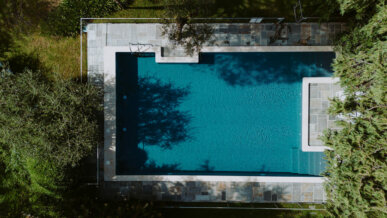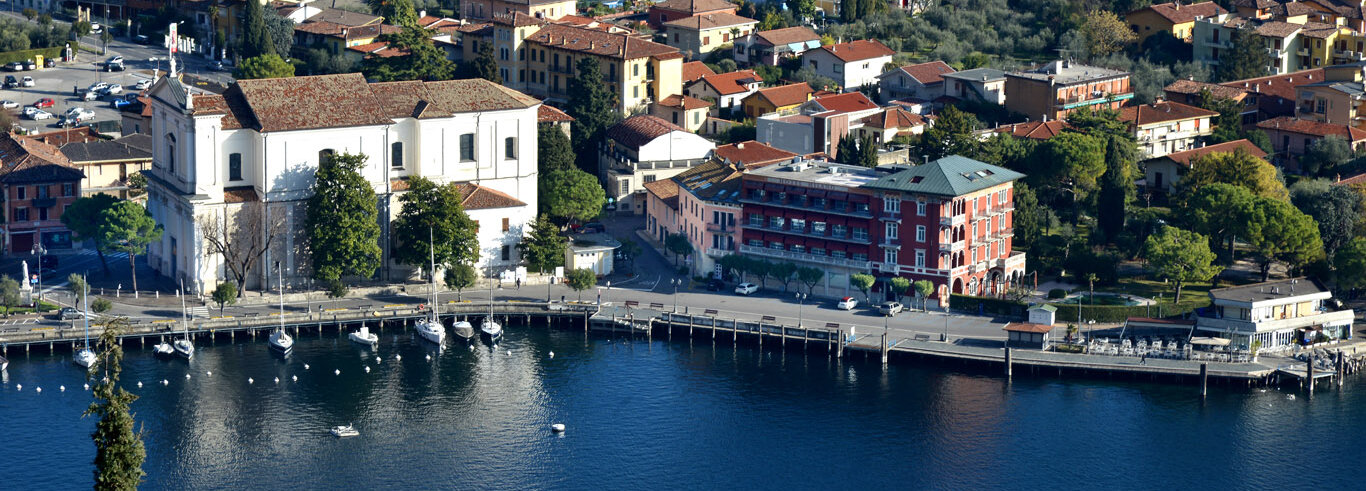
AL SEGNAVENTO, TODAY AND YESTEDAY
“Al Segnavento” consists of four stylishly furnished apartments: two on the ground floor, each with private portico and patio and two on the first floor; all four apartments overlook the park. The apartment building is right in the town centre by lake gulf in Maderno, close to the beaches, a 2.5 km long cycle lane and the ferry terminal with daily ferryboat services to Torri del Benaco (VR). The ferry terminal and bus stop are just a short walking distance away. The building is set in a vast, beautifully kept park (2,937 square metres in size) which has been looked after by the same family over the years. The park contains tall and shady trees and seasonal flower beds, a rose garden, a lemon grove area (with lemons, cedar and bergamot trees); a vegetable garden, aromatic herb plants and, last but not least, peace and quiet for you to relax in.
The apartments have four outside parking lots, one of which is for hybrid plug-in or full electric vehicles. The entrance is on Lungolago Zanardelli at no. 24 and a private avenue takes you to the car park shaded by cupressus cashmeriana canopies. The apartment building’s private, fenced swimming pool is 15x6 metres in size and remains on a raised area of land in respect to the garden. Access to the pool is controlled by opening and closing hours and is for guests’ use only. The swimming pool has a solarium and sun bed area. The building, a former lemon greenhouse, in which “Al Segnavento” was built, stands in the park and is separate from the adjoining manor house (il Rivellino) and the car park area. The bustling lake shores are not more than 100 metres away. Lastly, trees and hedges also shelter the building from surrounding noises, naturally creating an oasis of peace and quiet in the centre of Maderno.
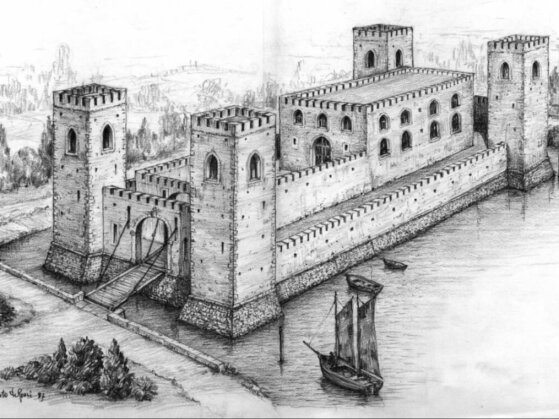
The “Al Segnavento” is enclosed by the walls of the bell tower, the only one of the Maderno castle’s four towers to have survived and lies in the gulf of Maderno. Built in the Middle Ages to protect the town from frequent Barbarian raids, in the 13th century the fort was made seat of the Podestà (Chief Magistrate) and then of the Vicario (magistrate). In 1310, Maderno was chosen as the capital of the Brescian side of the lake and the castle became its administrative seat. In 1377, the capital was transferred to Salò and the castle began to fall into ruin.
Finally, a fire destroyed what remained of it with the exception of a single tower. Evidence that there was a double moat around the Maderno castle is found in the photo. The remaining section of a moat with an entrance from the gulf up to one of the former towers, which had already been converted into the bell tower, can also be seen in the photo. In the 18th century, the population of Maderno began building the Saint Andrea parish church on the ruins of the castle, completing it in 1825. Called Bacino della Fossa, the canal was filled in in 1901 for reasons of hygiene. To the right of the canal, behind the building, the lemon greenhouse, which now is “Al Segnavento”, is visible. This photo also testifies the absence of a lakeside road. To make the ferryboat terminal built in 1901 accessible, a road to the left of the parish church was used. This went alongside the bell tower and the canal to the beach and a rudimentary boat mooring area near Osteria del Vapore.The building which now is the Hotel Milano wasn’t built until 1925.
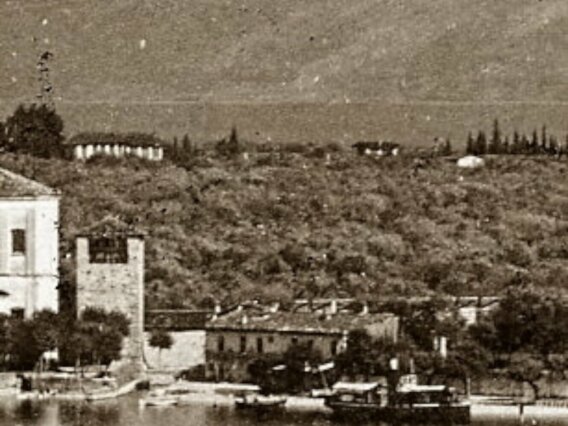
In the 18th century the area from the parish church to the modern day ferryboat stop to Torri del Benaco (called Il Rivellino) was used for citrus fruit farming (one of the era’s independent economic resources). The current lakeside road was then a dusty beaten earth path in the midst of olive and lemon trees concentrated in the area to the left. As far as the lemon grove, visible to the right of the canal (Bacino della Fossa), is concerned, one surviving part of its stone walls is now used for that same purpose and contains the “Al Segnavento” citrus grove.
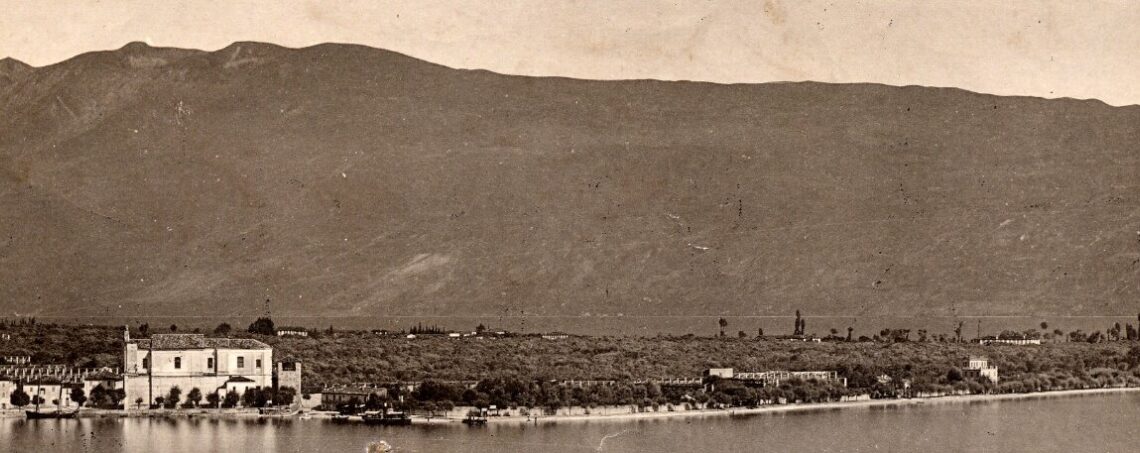
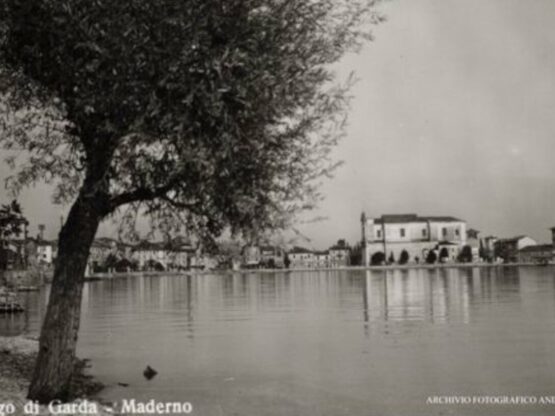
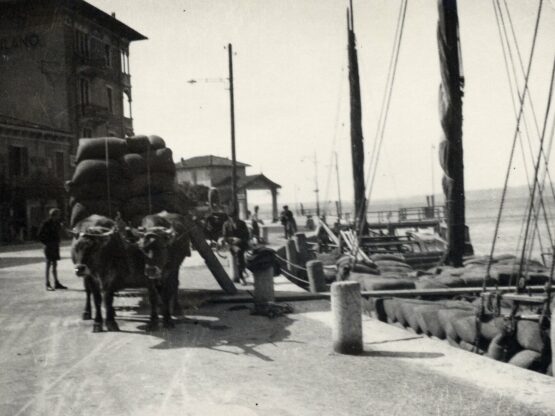
After World War I, a large area of the lemon grove was converted into a warehouse for the building business of the family who owned the whole area as far as the lake. A considerable amount of room was needed, especially height-wise, where to store timber, other building materials and machinery required for the building business. The lemon grove’s outer walls, now visible both inside and outside “Al Segnavento”, were wisely conserved and the new warehouse was simply roofed over.
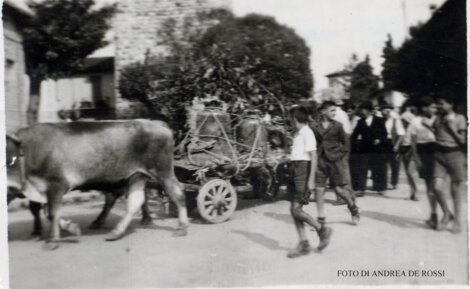
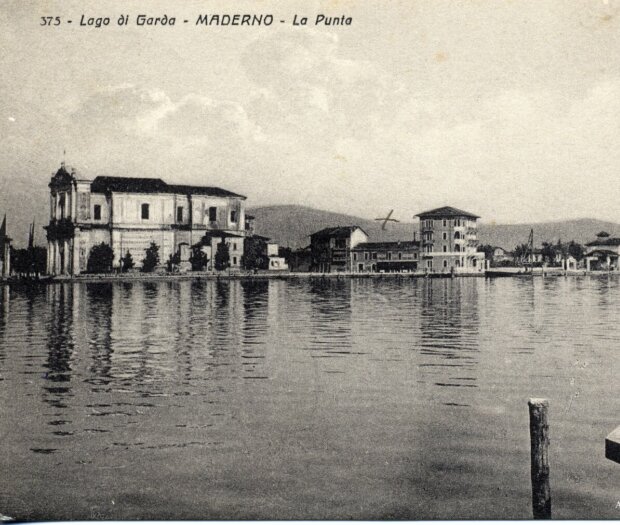
thanks to Andrea De Rossi photo archive for the precious collaboration
storiaditoscolanomaderno.blogspot.com
In the early months of 1945, with the end of World War II in sight, a vain attempt to give a final boost to the Italian war industry led to the requisition of the remaining metal still present in the area - the church bells. The intention of the local government (Italian Social Republic) was to melt these down and make them into cannons. Despite the technical difficulties inherent to the requisition, the bells of the Maderno parish church and those of Gaino church (a village above Toscolano) were taken down from their towers and temporarily located right in the warehouse until they would have been melted down. Fortunately, the bells were still there at the end of the war in April 1945, perhaps forgotten because of the whirlwind of tragic events at the end of the war.
The bells of the Maderno parish church were thus returned to the bell tower with no further ado (they are still there today). As for the Gaino bells, the local parishioners organised a festival when they were collected from the warehouse, transforming the long climb up to the village into a celebratory procession around the cart pulled by a pair of oxen. The war had truly come to an end.
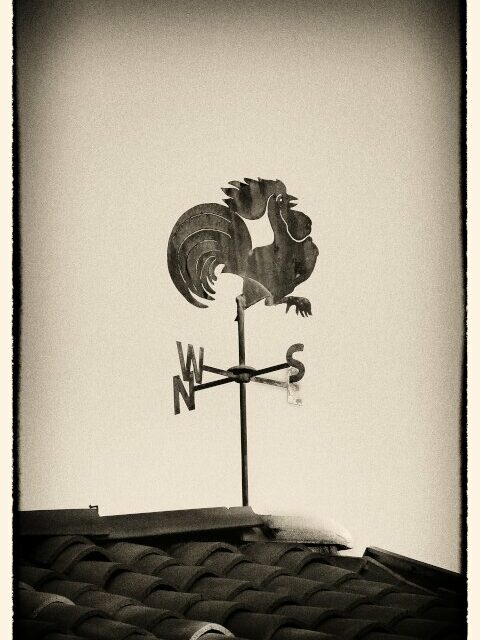
When the family building business closed down in the 1970s the owners of the building added an outer portico to the former lemon grove (warehouse) which is now part of two ground floor apartments. Thoroughgoing renovation work then followed in 1997 including a static anti-seismic consolidation of the whole building and the addition of the current tiled roof and a copper weathercock on the top, near the lemon greenhouse. Twenty years later the weathercock, having in the meantime become the property’s mascot, inspired a radical transformation of the former lemon greenhouse. At the same time, it also inspired the name given to the newly restored building...
Toscolano Maderno is located in a pleasantly windy area in a large, attractive gulf which is also a natural harbour for boats. An ideal spot for yachts and regatta sailboats, as proven by the Garda’s legendary Centomiglia that has been held here every year since 1950, starting in the waters of nearby Gargnano. This peculiar setting has contributed to the decision of the name “Al Segnavento” - at the weather vane. And the four apartments are not numbered but called after the winds which periodically and seasonally blow through Toscolano and Maderno: Fasanella, Montese, Rocca Fredda, Tramontana.
In 2017/2018, based on the above outline, the owners undertook construction work aimed at changing the intended use of the premises, consisting of the transformation of the building into four apartments to be used as vacation rental apartments: two on the ground floor and two on the first floor, with common access to a yard, swimming pool, and private parking area. In order to make Al Segnavento as energy efficient as possible, particular attention was paid to the selection of the construction materials and fixtures. This enabled the facility to obtain class D energy certification with an estimated average consumption of 99.92 kwh/m2 per year. Similar attention was paid to thermal insulation, where the external structures were partly covered with semirigid layers of rock wool (covered with a suitable skim coat or with natural wood boards) or by filling the cavity walls with expanded polystyrene panels on the Via Bianchi side. The ground floor was insulated with extruded polystyrene panels. The new roof was insulated with Stiferite panels, in order to obtain maximum insulation. In addition to thermal insulation, particular attention was paid to acoustic insulation with the installation of a sound-absorbing underfloor layer (both on the ground floor and on the first floor), with suitable sound-absorbing strips under the walls and partitions, with counter-walls adjacent to the entrance and along the stairwell made of plasterboard with a layer of sound-absorbing rock wool. The structure of the metal staircase was anchored to the load-bearing walls with special anti-vibration and sound-absorbing dowels. The internal plasters were made of highly breathable natural bio-lime. The heating plant is a "hybrid" system which combines the use of electricity and natural gas as needed. There are also hookups for mounting solar thermal or photovoltaic panels. Finally, each apartment has autonomous heating, air conditioning, and controlled mechanical ventilation (VMC), subject to periodic maintenance and sanitation.
OUR GARDEN
Indirizzo
via Lungolago G. Zanardelli n. 24 - 25088 Toscolano Maderno (BS) Italia
45° 38' 2" N - 10° 36' 2" E
© 2023 | Tutti i diritti riservati Al Segnavento di Alberti Anna Maria s.a.s. Cod.Fisc./P.IVA 03945100984 Cookies Policy

